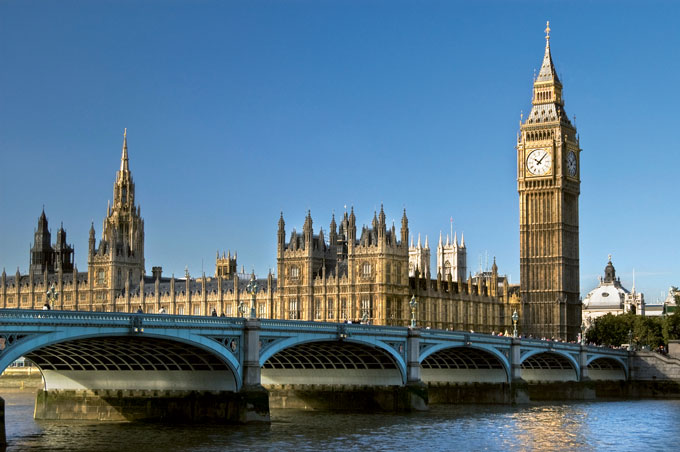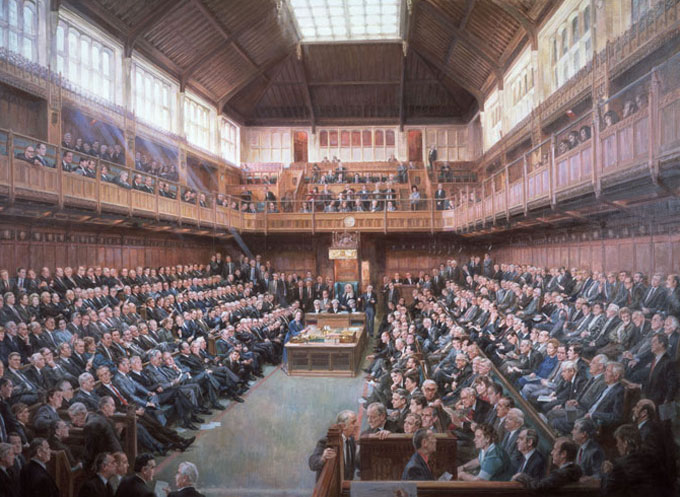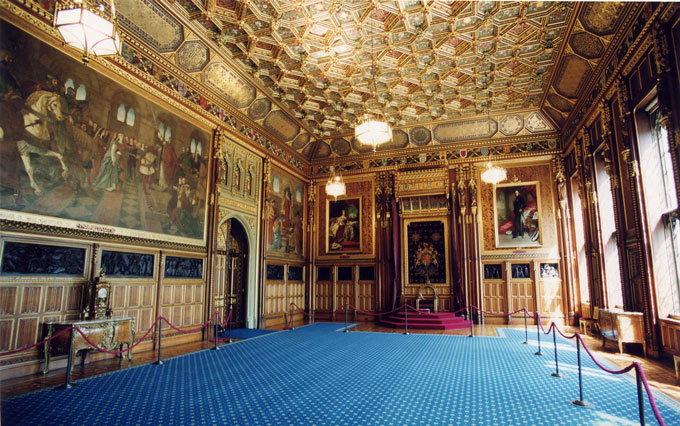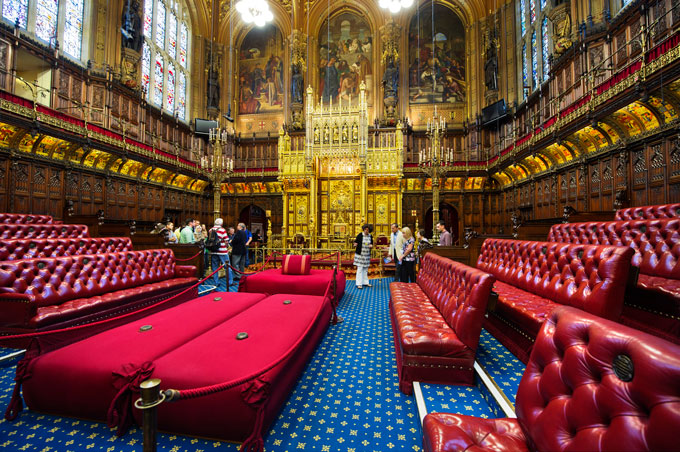The art in Parliament is surely one of Britain’s best kept secrets. From contemporary portraiture in Portcullis House to Pugin interior design in the Lords Chamber, a wealth of beautiful and interesting paintings, sculptures and artifacts wait to be discovered.

In our March/April issue we took readers around the Palace of Westminster – better known as the Houses of Parliament.We discovered how the building dates back to King Canute, who reigned from 1016 to 1035 but has endured various means of destruction. A fire ravaged the palace in 1834, after which there was a competition to design the new palace. There were 96 applications, but architect Sir Charles Barry won it. It is his creation that stands on the Thames and remains one of our country’s most historic landmarks and the centre of British democracy.
It is also home to an abundance of artistic treasures. While general tours of Parliament run all year round, there will be tours dedicated to the art and artifacts of Parliament until 19 July this year.
We joined the Art and Architecture in Parliament: Contemporary Portraiture in Portcullis House tour, which takes around 75 minutes. Portcullis House is the most modern addition to the parliamentary estate and the first building to be added this century. The Queen officially opened it in 2001.
Portcullis House consists of some 200 offices built around a courtyard atrium containing 12 fig trees. The first floor, home to committee and conference rooms, also holds the contemporary pieces from the Parliamentary Works of Art Collection, which is comprised of almost 8,000 paintings, photographs, prints and sculptures.
For the Contemporary Portraiture in Portcullis House tour, we started in the Betty Boothroyd room – where select committees sit – as we were welcomed by our guide. The variety of styles of work and the stories behind so many of the pieces in Portcullis House mean that there is, in every single case, plenty to talk about.
One of the most interesting paintings is June Mendoza’s 1987 painting The House of Commons, 1986, which showed the Commons in session with each and every individual person in the chamber intricately and painstakingly immortalised. The MPs in the painting were successful in a ballot to be included, but those who were left out, sat for a different painting – The Other Picture; A View of the Smoking Room and Library of the House of Commons 1987 – by Andrew Festing. It proves equally as interesting compositionally – but much less formal, showing MPs having a jolly old time in more relaxing surroundings.

There are a couple of other pieces that require a lot of attention. Grayson Perry’s Print for a Politician is a humorous helping of satire – grouping together stereotypes in a busy monochrome map. It’s funny and clever and you could pour over it for hours, but unfortunately the tour doesn’t allow for too much lingering, so pressing on is essential.
Famous political satirist Gerald Scarfe’s House of Commons 1965 – a rare and early oil painting from the cartoonist who now works only in ink. It shows MPs as caricature and it’s great fun pointing out who’s who from the attributes Scarfe has homed in on and amplified. Two of his original ink pieces are also in Portcullis House – of Thatcher and of Blair. There is also an on loan Scarfe charcoal drawing of Churchill.
Proportional Representation by Jonathan Yeo – commissioned during the 2005 election – shows visually how votes were cast by the size of each of the separately framed portraits of the leaders of the three biggest parties. Tony Blair, in the centre, has the largest canvas, with William Hague next and the smallest one of Charles Kennedy.
Another favorite is a photorealistic portrait of Tony Benn by Andrew Tift: the background is heavy in objects which serve as clues to his life, like a vial of blue blood and a Mars Bar.

Going across to the House of Lords to begin the Royalty and Splendor in the House of Lords tour within is like stepping back in time. The palace is as splendid inside, as it is out, although the Lords chamber is much more opulent, thanks to remaining intact during the blitz.
We started the Lords tour up the sovereign’s stairs – at the top of which are busts of former members of the House of Lords – before moving into The Queen’s Robing Room – so called because it’s where Her Majesty puts her robes on before entering the Lords chamber. The room’s paintings are dedicated to the legends of King Arthur, with The Admission of Sir Tristram to the Fellowship of the Round Table by William Dyce RA the largest of all and taking up the longest wall. There are also thick woodcarvings around the room detailing the life of King Arthur.
Everything is in the Gothic revival style, which was favoured by Augustus Pugin, who provided many of the interior designs for the Houses of Parliament. There’s plenty of pattern, gilding and pomp, to the point that you don’t know where to look first. The ceilings are grids of gold, containing symbols of roses, dragons, the Portcullis – gate – emblem of parliament, the Irish shamrock and the Scottish thistle.
In the Royal Gallery, which is over 33 metres long there are gigantic watercolour frescos of the Napoleonic war: the battles of Waterloo and Trafalgar. However, my favorite room was the Prince’s Chamber, which is related to the Tudor period. Above our heads, we were surrounded by portraits of the Tudor family: Henry VIII, all of his wives, Elizabeth I and Lady Jane Grey. These works, which are painted onto an abundance of gold ground on the wall, are all the same size and fit perfectly around our heads like a pack of cards laid out side by side, looking down at whoever enters the chamber. They were painted in the 1850s by art students at The Royal College of Art. There is also huge statue of Queen Victoria in here, which would dominate if it weren’t for the paintings.

The Lords Chamber itself is ‘Pugin’ beyond belief: red, gold, and luxuriously detailed. The woolsacks on the floor are the only things that are not opulent – they sit at the centre to serve a reminder of where Britain’s money used to come from. You mustn’t sit down on the red leather seats – as a mark of respect for those who are members. The subjects of the wall paintings in the chamber – religion, justice and chivalry – reflect the 19th century roles of the House of Lords.
There is so much to see – from the old to the new – that the art tours of the Houses of Parliament – the centre of our democracy and the place where all of the decisions our country has to make are made, can also double as a gallery of British art to rival any in the capital.
To book a place on either tour, click here or tel: 0844 847 1672





 © 2024
© 2024